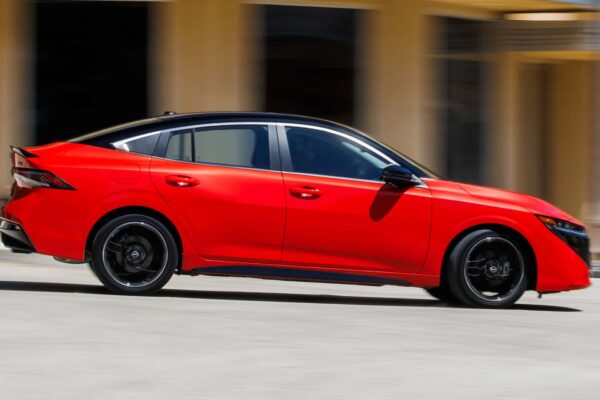A Facebook video depicting the global fear over car repair estimates has struck a chord with car owners.
Jdmretrogio (@Jdmretrogio) posted a seven-second animated video on October 8 that perfectly sums up every driver’s worst nightmare in the repair shop. Viewers clearly relate.
The short clip features a surreal animated set with a car in the background, the hood raised in the classic car distress mode. The disgruntled black cat named “I” represents the car owner’s reaction, while the laughing Jack Russell terrier represents the mechanic’s reaction. A text overlay delivers the following sentence: “When I ask the mechanic what needs to be replaced. Mechanic: The car.”
Visit the scary store
Jdmretrogio’s video depicts a scenario that strikes fear into the hearts of car owners around the world: asking a simple question about repairs and getting an expensive answer. The creator’s Facebook page, which focuses on JDM (Japanese Domestic Market) car culture and automotive humor, clearly understands the pain points of enthusiasts who love their cars but sometimes face the brutal realities of repair.
The post’s comment, “I wasn’t prepared to hear that,” suggests that this scenario is relevant to owners of high-performance vehicles and imported Japanese cars, which can present unique challenges and repair costs.
When repair costs exceed the value of the vehicle
The video’s humor resonates because it represents a real automotive dilemma: the moment when repair costs approach or exceed the car’s actual value. This situation, known in the industry as “totaling” the vehicle economically rather than through collision damage, occurs more frequently than many owners expect. Insurers typically declare a vehicle a total loss when repair costs exceed 70-75% of the vehicle’s actual cash value, although limits vary by state, ranging from 60% to 100% in Texas.
Several factors contribute to these scenarios. Older vehicles, regardless of their sentimental value, may require multiple expensive repairs at once. Engine problems, transmission failure, or extensive rust damage can quickly push repair estimates into the thousands, making replacement more economically reasonable than restoration.
Mechanics share their experiences
The comments section features auto professionals who delivered similarly devastating news to customers. Zachary Thomas, who says he works in the industry, shared a specific example: “I tell a customer ‘replace the engine or replace the car’ after the temperature rose over 280 degrees and the engine failed, it needed more than the ‘coolant flush’ they requested.”
When another commenter suggested that the old car could be fixed with just coolant, Thomas pointed the truth out, “Not with two blown head gaskets and a cracked block, that wouldn’t be the case.”
Other mechanics chimed in with their own version of the scary recommendation. “I usually call them ‘owner,'” James Eriksen Kinzer wrote, while Gerardo Mixcoatl shared, “Depending on who I say ‘needs a new owner.'”
Economics of automobile repair
Christian Huggins provided a detailed analysis of the economic reality: “I mean, yeah, sometimes cars get to a point where you can get a completely different car for the amount you’re going to invest in it. If someone’s in a 2013 Chevy Malibu, and the engine quits, you’re probably looking at 3,000 cars in repairs. Go buy…”
This analysis reflects the harsh mathematics of car ownership. Replacing a $3,000 engine with a $4,000 vehicle leaves owners in an uncomfortable position, especially when that same $3,000 is a down payment on a newer, more reliable vehicle.
The situation becomes even more difficult with luxury or high-performance vehicles, where costs for parts and specialized labor can escalate quickly. Brayden Butler shared a recent experience, “Bud just purchased a Challenger with $5,830 in Hemi parts and labor, and a new engine with $6,010 in labor.”
Customer frustration and reality check
Not all commentators were sympathetic to the mechanical evaluations. Michaela Pressley expressed a common customer frustration: “This has to be the most annoying thing I hear when I go into stores. I understand everyone has preferences but I’m not losing $3,000 on a new car.”
This reaction highlights the emotional side of car ownership. Cars are more than just a means of transportation: they are investments, daily companions and sometimes a source of pride. Suggesting a replacement rather than a repair may seem like a personal attack on the owner’s judgment or financial situation.
However, the mechanics had their own point of view. “When you don’t take care of the (expletive) and you get mad at others who tell you it’s the (expletive),” Broda Mann wrote, noting that some expensive repairs result from deferred maintenance.
Trust factor
Many comments revealed trust issues that can arise between customers and mechanics. Charles Bowen shared, “The last thing the mechanic told me was a $2,000 part I looked up. It was a $200 part that I fixed myself in an hour. I don’t always trust them.”
These suspicions are completely unfounded, as some stores mark up parts heavily or recommend unnecessary services. However, the commentary also shows how customers sometimes underestimate the complexity of automotive work, focusing solely on parts costs while ignoring labor, diagnostic time and warranty considerations.
The mechanic’s dilemma
From a professional point of view, recommending a vehicle replacement does not necessarily mean maximizing profit. Stacy Tyler explained the ethical considerations: “All you can do is recommend everything that needs replacing. If they don’t buy it’s not your fault. Until they say no every time, your car will be that way.”
This comment highlights the liability concerns that mechanics face. Its mechanics are legal “duty of care” to their clients and Could be responsible If their negligence causes accidents or if they fail to warn customers of safety risks. Recommending expensive repairs that customers refuse can lead to dangerous situations, while underestimating the extent of problems can lead to breakdowns or accidents that may be attributed to the shop’s operation. Mechanics Also required To inform customers of current or potential safety risks, including when customers choose to decline certain repairs.
When replacement makes sense
Despite customer frustration, there are legitimate scenarios where replacement becomes the reasonable recommendation. Adrián Habók shared an extreme example: “We had a customer who bought a car for €250 and needed to change all the brake lines, all the brake calipers, brake pads and disc. There were only two callipers that were above the price of the car.”
In such cases, the “trade car” recommendation is not a comedy: it is financial advice. Continuing to invest in a car with cascading problems often leads to a cycle of expensive repairs that ultimately cost more than replacement.
Engine1 I reached out to Jdmretrogio via Facebook direct message for additional comment. We’ll be sure to update this if he responds.



